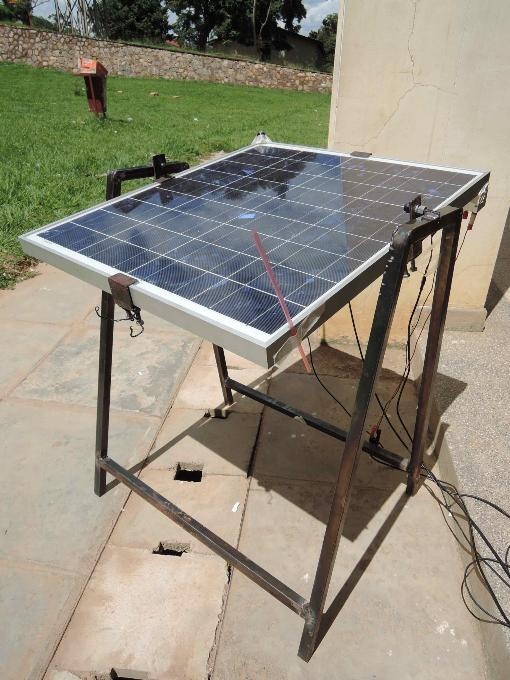Mar 7 2019
A person looking at a cell phone realizes the battery is low, suggesting another long walk into town to pay money and charge the device. By the time the person gets home, it gets dark, and a kerosene lamp is lit, which casts a dim glow across the room.
 (Image credit: Beth Parks)
(Image credit: Beth Parks)
A considerable amount of the person’s income is burned by the lamp, and it lets out poisonous gases. Breathing the same air as the burning lamp can be equivalent to smoking multiple packs of cigarettes per day.
This scenario appears strange to many people residing in the United States, whereas it is common for many who live in developing countries. A feasible answer to this scenario is the use of off-grid renewable energy sources such as solar energy to produce electricity for charging and lighting on-site.
Beth Parks, in the 2019 American Physical Society March Meeting in Boston, will be presenting a model, developed in collaboration with her team, which is capable of increasing the absorption of sunlight trapped by a solar cell, leading to an increase in its energy production by approximately one-third.
In Uganda, between 20 to 25 percent of people have no access to electricity. One solar cell supplies enough energy to power lights and charge cell phones and radios. This is a huge quality-of-life improvement.
Beth Parks, Associate Professor, Colgate University.
Although solar panels are a clean renewable energy source, they are usually placed on a rigid frame ideally facing the sun for particular hours in a day.
Previously, Parks identified a frame that used hanging weights and was capable of permitting the solar panel to trace the sun. However, this had not been tested and optimized for its performance and affordability, respectively, to confirm commercial application and adoption.
During a Fulbright fellowship in Uganda, she collaborated with students at the Mbarara University of Science and Technology and devised a frame using metal tubing, which can be readily obtained and assembled by a local welder.
We have created a frame using inexpensive materials that allows the solar panels to track the arc of the sun throughout the day. This approach could make solar energy more affordable to households and small businesses in the developing world.
Beth Parks, Associate Professor, Colgate University.
In this model, the west side of the frame had a bucket of rocks, whereas the east side had a bucket of water. When a limited leak from the water bucket is used, the weight changes and the panel rotates gradually from east to west all through the day.
The design was tested by Parks and her team on 20 arbitrary days in Uganda. The solar cell on the movable frame absorbed 30% more sunlight than the fixed solar cell at the same location.
If this frame is adopted, it has the potential to create a small industry for the local community.
Beth Parks, Associate Professor, Colgate University.
Parks stated that the system—battery, solar cell, charger, and frame—costs about 10% less than a similar rooftop solar cell system. This amazingly simple, creative, and cheap method has the potential to increase solar energy trapped for people in the developing countries, including remote regions that are off the grid.